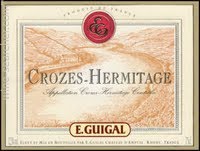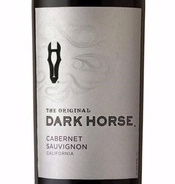|
|
 |
|
August 31, 2016
To the casual observer, what's in a wine glass is infinitely more important than the glass itself. To a large extent, that's true. Yet the glass ultimately plays a huge role in the level of enjoyment you get from the wine.
With apologies to Georg Riedel, the Austrian glassmaker who promotes the belief that virtually every different wine type requires a glass tailored in size and shape for very specific grape varieties, stemware requirements are a bit more pedestrian.
I don't need a $75 hand-blown Bordeaux goblet to fully experience the wonders of my favorite cabernet sauvignon. A simple wine glass that can withstand the rigors of a dishwasher does the job most of the time. It may not be as aesthetically pleasing, but the sensory aspect is more or less the same.
What I look for first in an everyday wine glass is a shape that is conducive to aromatic development. That means the mouth of the glass should be narrower than the bowl. This allows you to swirl and aerate the wine, which brings up the aromas and softens some more astringent wines.
The notion of drinking good wine from a Mason jar might be a romantic nod to fond memories from yesteryear, but you will lose some potential flavor development in the process, and you won't get as much from the tasting experience as you should.
I also prefer a wine glass that has volume. A 10-ounce glass is about the smallest I use, and generally for white wines only. I much prefer wine glasses that have a capacity of 20 ounces or more. The greater capacity allows for a greater surface-to-air ratio, enhancing the aromatic complexity of almost any wine. Pour 5 to 7 ounces into a 20-ounce glass, and see for yourself. It doesn't matter whether the wine is red or white.
It may surprise some wine enthusiasts, but white wines also benefit from the additional room to breathe. Even sparkling wines and Champagne taste better in this type of glass than they do in a traditional Champagne flute.
Bottom line, using a good wine glass may not be as important as what's in the glass, but it's certainly part of the pleasure equation.
Posted by Robert Whitley at 1:55 PM
|
|
August 24, 2016
The upcoming Labor Day weekend is the grillmeister's annual swan song. In most parts of the country, the grill goes undercover and the tools are stored for winter after one last hurrah on this holiday. I am determined to end the season on a bold note rather than a whimper.
Of course, I refer to the wines for the Labor Day finale. I have chosen five of my personal favorites from this summer's many outdoor feasts, one each from five broad categories.
 Rose — Chateau d'Esclans 2015 Whispering Angel, France — The Whispering Angel never fails to impress. A dry rose from Provence, this wine is fresh and crisp with succulent red-fruit notes and exceptional length for a rose. The average retail price for this wine on the WineSearcher website is $24. Rose — Chateau d'Esclans 2015 Whispering Angel, France — The Whispering Angel never fails to impress. A dry rose from Provence, this wine is fresh and crisp with succulent red-fruit notes and exceptional length for a rose. The average retail price for this wine on the WineSearcher website is $24.
Sparkling — Bisol Cru Cartizze DOCG, Prosecco di Valdobbiadene, Italy — This is a truly stunning brut-style prosecco from the region's finest vineyard. Few other proseccos, if any, can stand up to this magnificent expression of the popular northern Italian bubbly. It's expensive for prosecco, but worth every penny. The average retail price on WineSearcher is $42.
White — Rodney Strong 2014 Chardonnay "Chalk Hill," Sonoma County — In my humble opinion, this is the most underrated chardonnay made in California — and the greatest value to boot! It is richly layered and well-balanced, offering notes of lemon oil and pear. This wine is the perfect complement for grilled swordfish, chicken or even savory bratwurst. The average retail price on WineSearcher is $18.
Red — E. Guigal 2013 Crozes-Hermitage, France — While it's overshadowed by more illustrious (and expensive) wines from the northern Rhone, this peppery vintage is packed with gorgeous black fruits and spice and is extremely well-balanced. This is your wine for barbecued ribs, rare steaks and any sort of game you might cook on the grill. On WineSearcher the average retail price is $24.
Dessert — Eberle 2015 Muscat Canelli, Paso Robles — This Eberle won the trophy for best dessert wine at the Central Coast Wine Competition, and it has long been one of my favorites when I'm looking to put a dessert wine on the table that isn't too sweet. With inviting floral notes, hints of spice and just a touch of sweetness, it pairs nicely with fruit-based desserts, simple cakes and Italian cookies. The average price on WineSearcher is $20.
Posted by Robert Whitley at 5:50 PM
|
|
August 17, 2016
When the Dark Horse wines were in the planning
stages a few short years ago, inside the brain trust at E. & J.
Gallo Winery the concept was commonly called the "20-7 project."
Throughout
its history, Gallo has been sensitive to the consumer need for quality
value wine. Consider the cost, for example, of putting a modest $20 wine
on the dinner table every night. The tab comes to more than $7,000 a
year. For many couples raising children and saving for college, the
price is simply too high, no matter their level of interest in wine.
The
idea behind the 20-7 project was to meet the demand for value with a
wine that tasted like a $20 bottle, but cost $7. Despite the very best
of intentions, it didn't pencil out. Undaunted, Gallo upped the price
rather than abandoning the project altogether.
 The
result is a new brand that is growing in popularity under senior
winemaker Beth Liston, who oversees Gallo's massive production facility
in Livingston, California. Most of the grapes for Dark Horse are sourced
from the Lodi region in the Sacramento Delta, and the wines are
line-priced at about $9 a bottle. The
result is a new brand that is growing in popularity under senior
winemaker Beth Liston, who oversees Gallo's massive production facility
in Livingston, California. Most of the grapes for Dark Horse are sourced
from the Lodi region in the Sacramento Delta, and the wines are
line-priced at about $9 a bottle.
Winemaker Beth Liston
While the price is attractive,
it would be meaningless if the wines didn't deliver. On that score,
recent critical acclaim tells Liston she's on to something. At the San
Diego International Wine Challenge earlier this year, for example, seven
Dark Horse wines medaled, including a 90-point gold medal for the 2015
Dark Horse Sauvignon Blanc. Even its pinot noir took an 88-point silver
medal, something of a surprise because the region is generally thought
to be too warm for top-notch pinot.
"Pinot noir at this price
point is a challenge," Liston told me recently. "We're always striving
to get those hints of lavender and violets and cherries." striving
to get those hints of lavender and violets and cherries."
The Dark
Horse project might not have been possible at one time, but advances in
viticulture and technical know-how at the winery have broadened the
opportunities to make good wine outside of the more established coastal
wine regions.
"The Lodi growers are doing great work with lower yields," said Liston, "and you do have some cool nights because of the Delta."
Her
most unusual wine is the Big Red Blend, which changes every year.
Drawing upon Gallo's connections in Spain, Italy and South America, it
can include everything from cabernet sauvignon and merlot to
tempranillo, sangiovese and malbec. The most recent Big Red Blend
collected an 87-point silver medal at the San Diego competition.
I
tasted the lineup recently and was most impressed with the merlot and
chardonnay — grapes thought to be more suitable for a cooler climate
like pinot noir. The Big Red Blend also showed very well.
The name Dark Horse was chosen, as it was explained to me, because the quality of the bottle "sneaks up" on you. It's so true.
Posted by Robert Whitley at 9:37 AM
|
|
August 10, 2016
My summer break took me on a two-week journey through the picturesque
Southwestern United States. The tour launched from San Diego,
California, by car and included stops in Scottsdale, Arizona, the Red
Rock country of Sedona, Arizona, and finally Santa Fe, New Mexico, for a
couple of memorable evenings at the stunning Santa Fe Opera House.
While planning, I was careful to choose hotels with a strong culinary
focus. The Phoenician in Scottsdale, the Enchantment Resort in Sedona
and La Posada Hotel in Santa Fe made the itinerary, based on the promise
of an exceptional food and wine experience.
The outlier was a stop in Winslow, Arizona, on the return to San
Diego. These days, Winslow is a sleepy hamlet, located in the Sonoran
Desert, smack in the middle of Arizona's high country, aka the middle of
nowhere. My wife insisted we spend a night at the historic La Posada
Hotel, which is not related to the hotel by the same name in Santa Fe.
The Winslow La Posada was built in 1929 and became the jewel of the
Santa Fe Railroad Harvey House hotels in the heyday of rail travel.
Winslow was a thriving hub in northern Arizona back in the day, with its
train station and heavy auto traffic on the infamous Route 66.
The big move to air travel and the construction of the interstate
highway system eventually took its toll on Winslow, and in 1957 La
Posada was closed to the public and converted into offices for the Santa
Fe Railroad. By the mid-1990s, the railroad decided to tear down the
hotel, until the National Trust for Historic Preservation got wind of
the decision and placed La Posada on its endangered list. It found a
buyer in Allan Affeldt. He and his wife, Tina Mion, took possession in
1997 and immediately began work on the restoration. In 2000, they
brought in renowned chef John Sharpe to operate the hotel restaurant,
The Turquoise Room. Sharpe was nominated for a James Beard Award in
2011.
Dinner at the Turquoise Room was the highlight of my journey. I
ordered the platter of quail, elk and venison and paired it with an
outstanding Rhone-style red blend from the south of France. The bottle
of wine from the list set me back all of $38. There were magnums of Napa
Valley cabernet sauvignon from excellent producers for less than $100.
As I marveled at the depth of the list and the modest prices, the
beverage director, Johnny Jackson, came to the table to deliver the
wine. When I mentioned the extraordinary pricing, he said the most
remarkable thing: "I try to buy closeouts, then I pass along the savings
to our customers."
It's such a crazy idea that it just might work. I know one thing for
sure: I will return to this culinary oasis in the middle of the desert.
Posted by Robert Whitley at 2:55 PM
|
|
August 3, 2016
Thirsty wine enthusiasts need not worry about busting the budget to beat the heat this summer. Splendid wines at refreshing prices ($20 or less) abound.
I have selected 20 "value" wines that impressed me during the 2016 San Diego Wine Challenge earlier this year. All were recognized with medal awards that speak to their quality. The modest prices speak to their value. Enjoy!
Alamos 2014 Malbec, Mendoza, Argentina ($13) — A juicy Malbec goes so well with smoky aromas from the grill.
Allegrini 2014 Valpolicella DOC, Italy ($17) — Perfect with tomato-based pastas and grilled sausages.
Astoria 2015 'Alisa' Pinot Grigio, Delle Venezie IGT, Italy ($11) — Flavorful and lush, especially for a pinot grigio, this is one of the best from Delle Venezie.
Banfi 2013 Centine Rosso, Toscana IGT, Italy ($12) — Unusual concentration and depth for the price. Might be the best red on the planet for 12 bucks. Remarkably consistent vintage to vintage.
Barefoot Bubbly Brut Cuvee, Californnia ($10) — Winemaker Jen Wall strikes again. Structured and refreshing and better than any other bubbly you are likely to find at this price. Barefoot's Prosecco DOC isn't too shabby, either.
Benziger 2014 Sauvignon Blanc, North Coast ($16) — Beautiful balance, beautiful price. Benziger always delivers quality and value across its vast portfolio of wines.
Bolla 2012 Torr'Alta, Veronese IGT, Italy ($19.99) — This "super" veronese red from northern Italy is one of my personal favorites for summer. Serve it up with grilled or roasted chicken dishes, brats, or anything savory from the grill.
Columbia Winery 2013 Cabernet Sauvignon, Columbia Valley ($16) — This wine is a reminder that Washington produces some very nice cabernet sauvignon at modest prices.
Cycles Gladiator 2014 Petite Sirah, Central Coast ($11) — Winemaker Adam LaZarre is brilliant when it comes to sourcing excellent grapes for his portfolio of inexpensive wines. This is the ultimate BBQ wine. Burnt steaks and spicy grilled sausages are right in its wheelhouse.
Dellatori 2013 Chianti DOCG Riserva, Italy ($15) — You can pay a lot of money to taste excellent red wines from Tuscany. Or you can pick up a bottle of Dellatori's Chianti Riserva for $15 bucks and smile all the way home.
Dry Creek Vineyards 2015 Sauvignon Blanc, Dry Creek Valley ($18) — Absolutely the finest California sauvignon blanc for the price, hands down, and a personal favorite at the moment.
Eberle Winery 2015 Syrah Rose, Paso Robles ($18) — Winemaker Chris Eberle (no relation to winery owner Gary Eberle) is out with his first wine and if it's a preview of things to come, look out. This rose is crisp and refreshing, with juicy red fruits and wonderful length on the palate.
Garnet Vineyards 2013 Chardonnay, Monterey County ($18) — When you find a beautifully crafted chardonnay from Burgundian specialist Alison Crowe and the price is under $20, it's your lucky day, so buy it.
Giesen 2015 Sauvignon Blanc, Marlborough, New Zealad ($14) — This is Giesen's basic entry level sauvignon and it's deliciously pungent, as a Kiwi sauvignon should be.
Handley 2014 Gewurztraminer, Anderson Valley ($20) — Might be the best dry gewurztraminer made in America. If not, it is very, very close.
J. Lohr 2015 Sauvignon Blanc 'Flume Crossing,' Arroyo Seco ($14) — Jerry Lohr made his reputation with red wines from Monterey County and Paso Robles. That said, his whites are often world class.
Kendall-Jakson 2014 'Avant' Chardonnay, California ($17) — K-J certainly knows a thing or two about chardonnay, an expertise that serves it well with the remarkably consistent Avant line of K-J wines. I love the balance in this one.
Navarro 2015 Pinot Grigio, Mendocino ($16) — This small family run winery in the Anderson Valley is a wonder with white wines. Its pinot grigio (it also makes a beautiful pinot gris) is one of the finest in America.
Pacific Rim 2014 Chenin Blanc, Hahn Hill Vineyard, Yakima Valley ($15) — Dry chenin is widely underrated, but when it's good it's very good.
Ramon Bilbao 2015 Albarino, Rias Baixas, Spain ($15) — Crisply structured, but with a richness and length that provides a twist on the Albarino theme. If you're vacationing seaside this summer and enjoying steamed or raw shellfish, this is the ticket.
Posted by Robert Whitley at 2:04 PM
|
|
 |
|